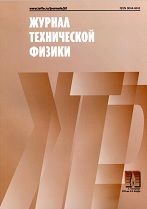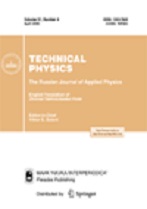|
This article is cited in 2 scientific papers (total in 2 papers)
Physical electronics
Resistive switching effect of the structure based on silicon nitride
F. F. Komarovab, I. A. Romanovc, L. A. Vlasukovac, I. N. Parkhomenkoc, A. A. Tsivakod, N. S. Koval'chukd
a A. N. Sevchenko Research Institute of Applied Physical Problems, Belarusian State University, Minsk
b National University of Science and Technology «MISIS», Moscow
c Belarusian State University, Minsk
d JSC "INTEGRAL", Minsk, Belarus
Abstract:
The electrophysical properties and the resistive switching effect in ITO/SiN$_{x}$/Si memristor structures have been investigated. A silicon nitride film $\sim$200 nm thick with a Si/N ratio varying with depth has been deposited on a silicon substrate by chemical vapor deposition. The current–voltage characteristics of ITO/SiN$_{x}$/Si-$p$ structures have shown that the conduction mechanism in a high-resistivity state depends on the properties of the nitride film and is described in terms of the Pool–Frenkel model, which takes into consideration electron hops between neighboring traps. When the polarity of the voltage applied to the structure changes sign, conducting channels in the nitride film break down and the structure switches over to a high-resistivity state. The photoswitching effect has been discovered in the ITO/SiN$_{x}$/Si structure, which opens up a new frontier for using memristors in silicon optoelectronic devices.
Keywords:
silicon nitride, silicon excess, memristor, current-voltage characteristics, conduction mechanisms.
Received: 13.04.2020
Revised: 01.07.2020
Accepted: 07.07.2020
Citation:
F. F. Komarov, I. A. Romanov, L. A. Vlasukova, I. N. Parkhomenko, A. A. Tsivako, N. S. Koval'chuk, “Resistive switching effect of the structure based on silicon nitride”, Zhurnal Tekhnicheskoi Fiziki, 91:1 (2021), 139–144; Tech. Phys., 66:1 (2021), 133–138
Linking options:
https://www.mathnet.ru/eng/jtf5111 https://www.mathnet.ru/eng/jtf/v91/i1/p139
|


| Statistics & downloads: |
| Abstract page: | 47 | | Full-text PDF : | 17 |
|





 Contact us:
Contact us: Terms of Use
Terms of Use
 Registration to the website
Registration to the website Logotypes
Logotypes








 Citation in format
Citation in format 
